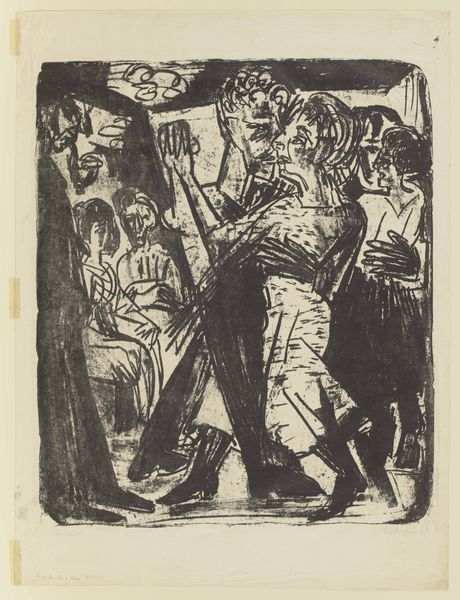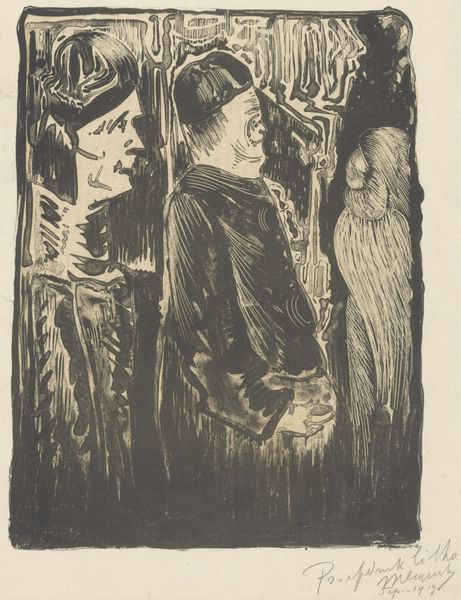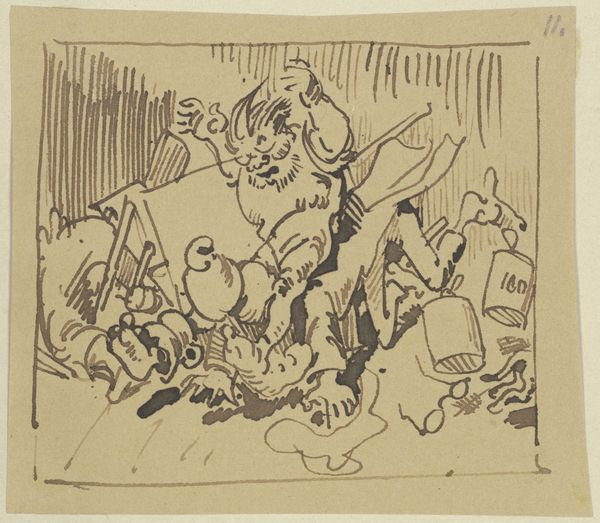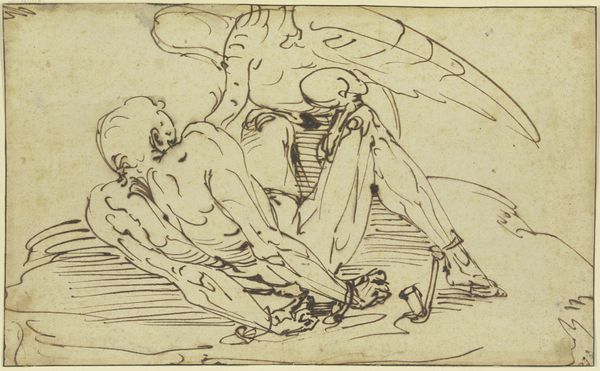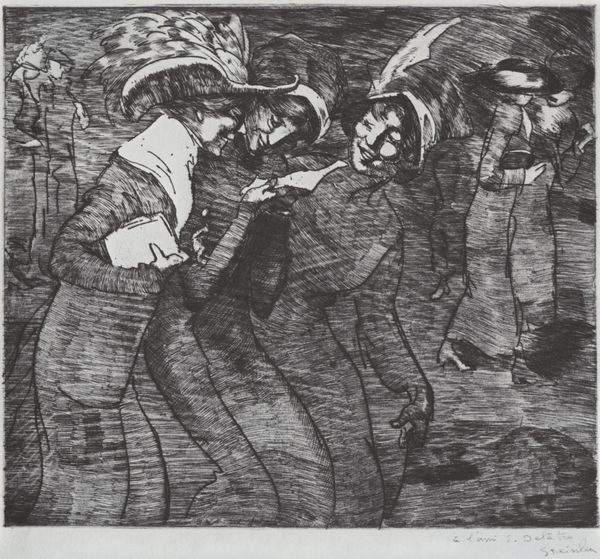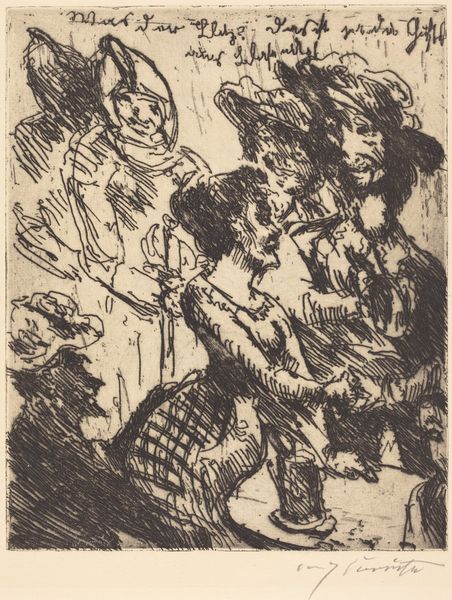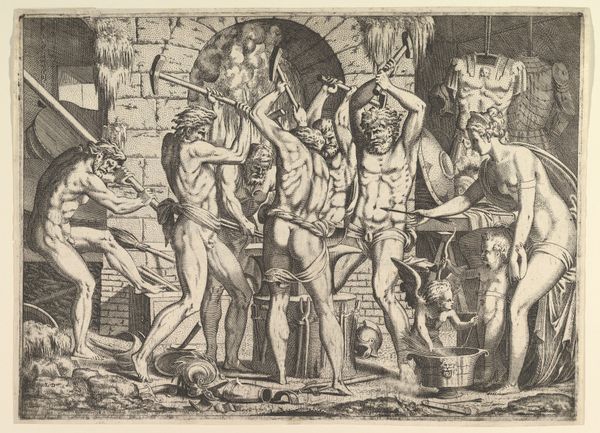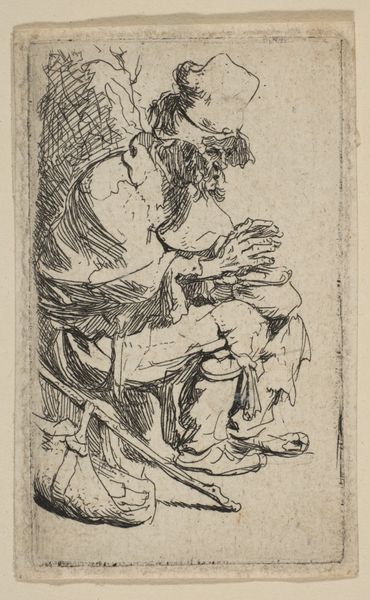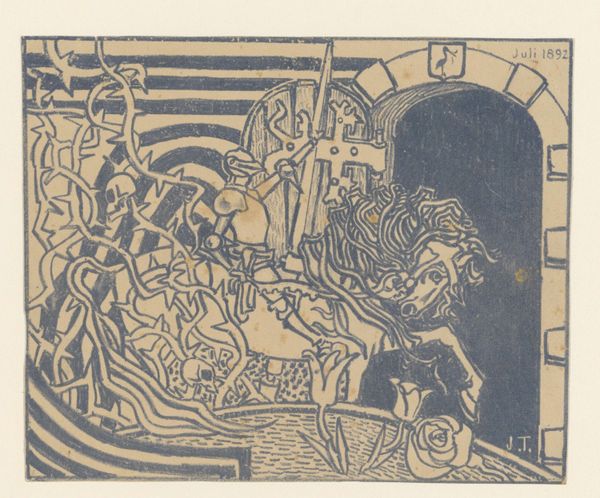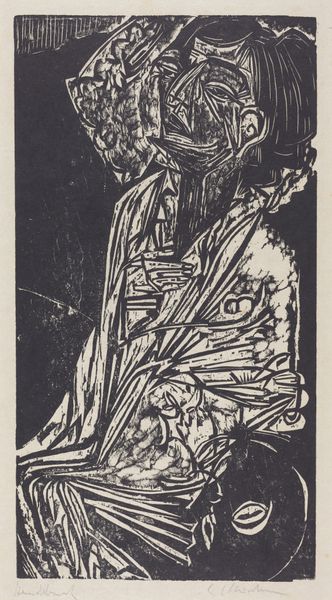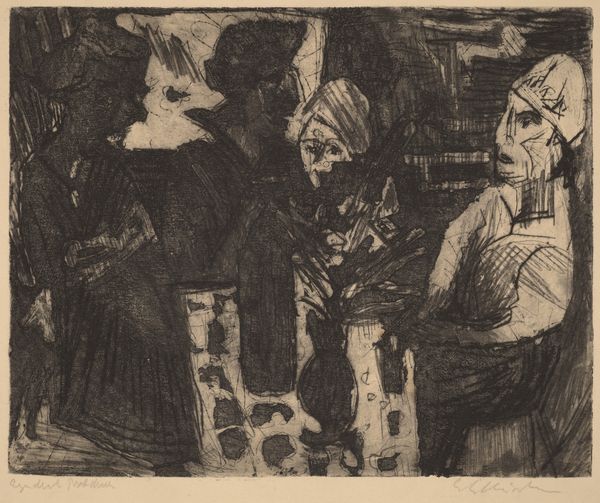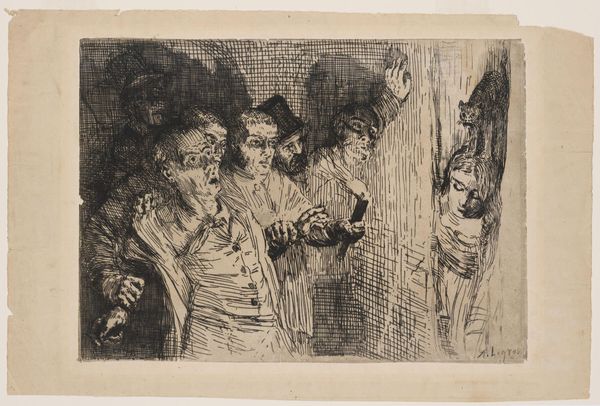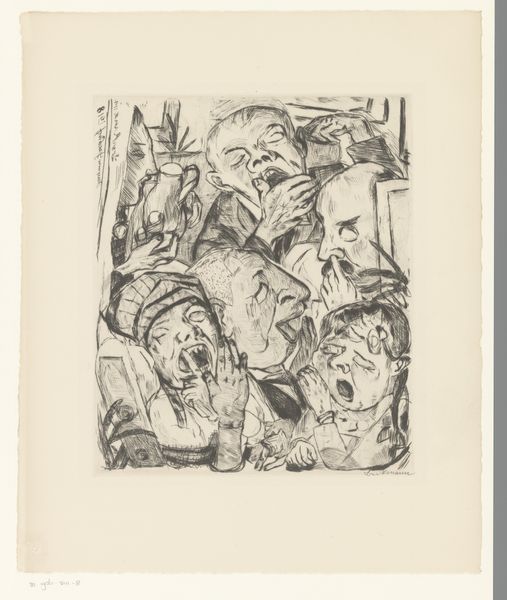
drawing, paper, ink
#
portrait
#
drawing
#
narrative-art
#
figuration
#
paper
#
jesus-christ
#
ink
#
history-painting
#
academic-art
Copyright: Public Domain
Editor: Here we have Fritz Boehle's "Denial and Repentance of Peter," made in 1893. It's an ink drawing on paper, currently residing in the Städel Museum. It depicts quite a somber scene, contrasting Peter’s grief with Christ’s suffering, underscored by a stark, linear style. What's your interpretation of the techniques and themes within this drawing? Curator: Looking at Boehle's choice of ink on paper for "Denial and Repentance of Peter," we can consider its accessibility as a medium. Ink, readily available, speaks to a potentially wider audience through prints and reproductions, reflecting a democratisation of religious narratives in 19th-century Germany. Note the meticulous detailing alongside simpler line work – consider how this interplay impacts the narrative's accessibility. Are we meant to empathize with the readily drawn Peter, or to examine Christ's detailed suffering? Editor: That’s a really interesting point about the varying detail implying social and economic perspectives of empathy through labor! Does the printing process add a layer of meaning itself, connecting to themes of reproduction and truth? Curator: Precisely! The reproductive nature of printmaking opens questions about originality, authenticity, and dissemination of knowledge and belief, especially during an era marked by the rise of mass media. How might Boehle be challenging notions of “high art” through this choice of medium, blurring boundaries between fine art and accessible imagery? Think also about how mass reproduction challenges the authority and exclusivity traditionally associated with religious imagery, putting the story of Peter and Christ into broader circulation, to the point that meaning could easily transform across copies and their consumption by different social groups. Editor: That is a lot to consider. I hadn't really thought about how the materials and reproducibility intertwine to inform the social commentary. It's like the artwork itself is mirroring the very act of spreading a story. Curator: Indeed. Considering art's materiality allows us to see it not just as a depiction but as an object enmeshed in socio-economic realities.
Comments
No comments
Be the first to comment and join the conversation on the ultimate creative platform.
